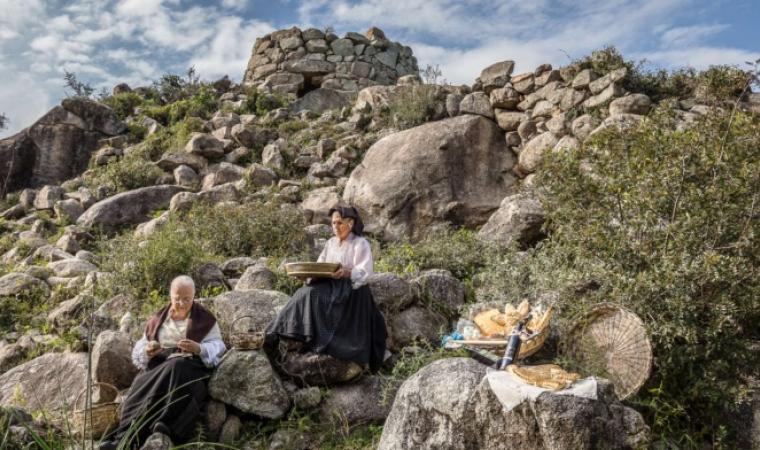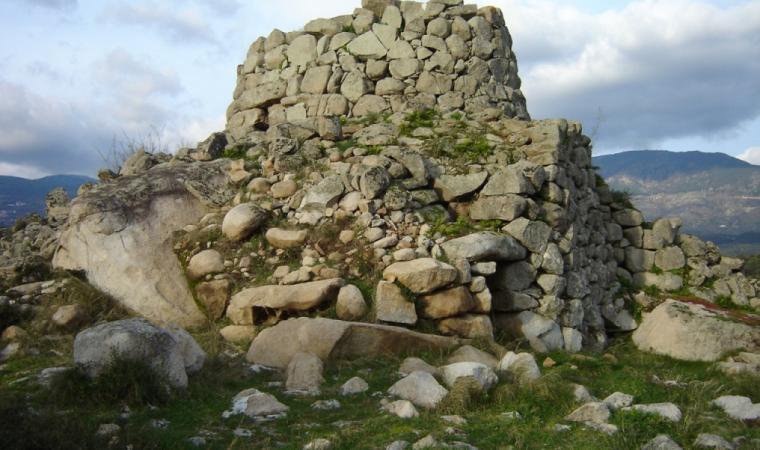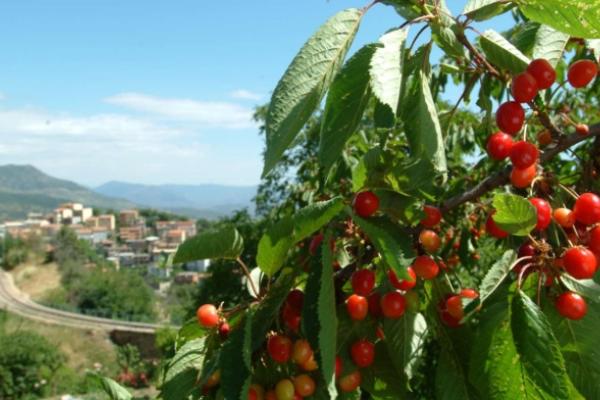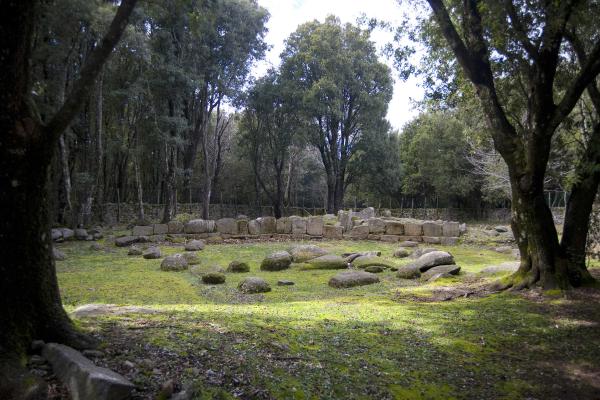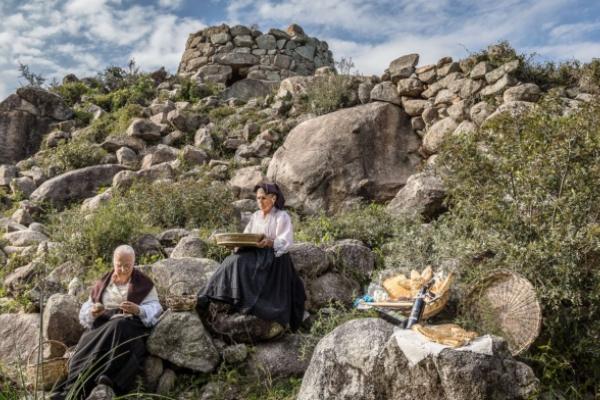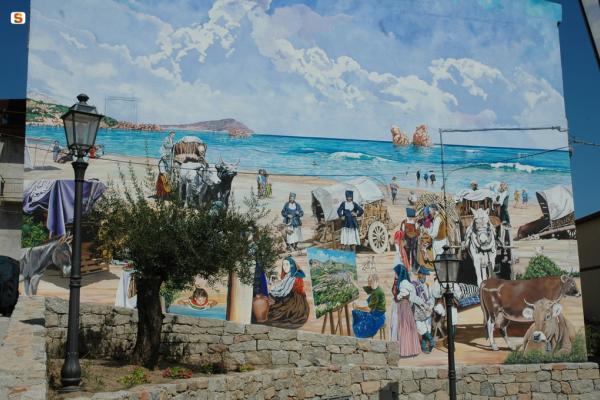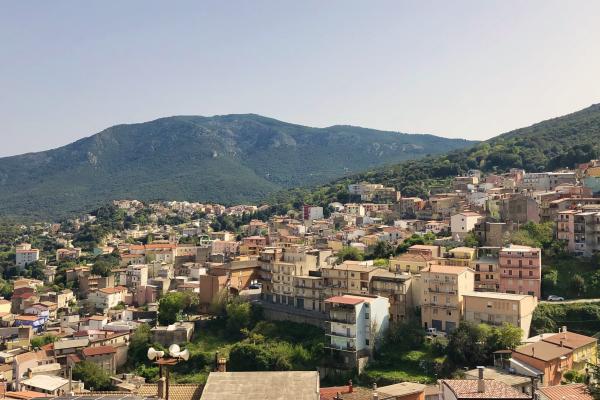At an altitude of 400 metres above sea level on the southern slopes of the Gennargentu massif, Ilbono is surrounded by a rolling landscape, where the porphyritic rocks of Monte Tarè stand out. Grains, legumes, orchards, vineyards and olive groves are cultivated here, irrigated by the streams that run through fertile hills. Ilbono is a town with over 2,000 inhabitants. In the Ogliastra province, it lies along the ‘road of longevity’ stretching from Lanusei to Tortolì. Since 2005, Ilbono has been an oil city, holding the Sagra di Olio e Olive (oil and olive festival each March that is not to be missed. Another leading sector is artistic craftsmanship. In Funtana de Idda, the main piazza, the narrow and winding historic streets of the village converge. Here stands the parish church of San Giovanni Battista, built in the 17th century on the site of a building that was perhaps Romanesque, whilst the Chiesa di San Cristoforo (the patron saint of which is celebrated at the end of September) was erected between the 17th and 18th centuries. In the countryside, rise up the small churches named after San Rocco and San Pietro, where finds from Roman times have been discovered.
At an altitude of 400 metres above sea level on the southern slopes of the Gennargentu massif, Ilbono is surrounded by a rolling landscape, where the porphyritic rocks of Monte Tarè stand out. Grains, legumes, orchards, vineyards and olive groves are cultivated here, irrigated by the streams that run through fertile hills. Ilbono is a town with over 2,000 inhabitants. In the Ogliastra province, it lies along the ‘road of longevity’ stretching from Lanusei to Tortolì. Since 2005, Ilbono has been an oil city, holding the Sagra di Olio e Olive (oil and olive festival each March that is not to be missed. Another leading sector is artistic craftsmanship. In Funtana de Idda, the main piazza, the narrow and winding historic streets of the village converge. Here stands the parish church of San Giovanni Battista, built in the 17th century on the site of a building that was perhaps Romanesque, whilst the Chiesa di San Cristoforo (the patron saint of which is celebrated at the end of September) was erected between the 17th and 18th centuries. In the countryside, rise up the small churches named after San Rocco and San Pietro, where finds from Roman times have been discovered. The most beloved festival is in honour of the Madonna delle Grazie at the beginning of July. Legend has it that a chest with the statue of the Madonna washed up on the beautiful beach of Cea and was transported to the village. Much beloved are also the rituals of Settimana Santa (Holy Week). Throughout the celebrations, the Ilbono women show off their traditional dress.
The name Ilbono derives from silvone or sirbone (wild boar), due to their abundance during Antiquity. The territory also preserves human remains from the Neolithic period (end of the 4th millennium BC), such as the documented Domus de Janas in various locations, including Tèxere, where seven menhirs were also found, and especially in the archaeological site of Scerì where, in addition to two hypogeal tombs excavated in two boulders (of a monocellular type), a Nuragic complex is maintained, perfectly integrated with the natural context and in a strategic position. On a granite tower stands a Nuragic complex in blocks of granite, consisting of a main tower with a circular layout (almost five metres high) and an added body (48 metres long and 36 metres wide), with an attic below. A village lies in an area that is not as steep. Discovered in some of the huts are materials that provide evidence from the Mid- and Late-Bronze period, from the 15th to the 12th century BC. The Nuragic remains are to be found all throughout the Ilbono territory, one of the highest-density areas of Ogliastra, with a dozen being single-story with megalithic dividers and walls. Some towers have Nuraghi Teddizzò and Mont'e Forru (replete with village). Some have Tombs of Giants nearby, with two in Pèrda Carcina. Indicating the area’s Romanisation are the remnants of an inhabited area, a necropolis and a road in Piranserì and a settlement in Alinusolu. Two military discharge papers were also found: from 79-81 and 127 AD, issued by the emperors Domitian and Trajan.






